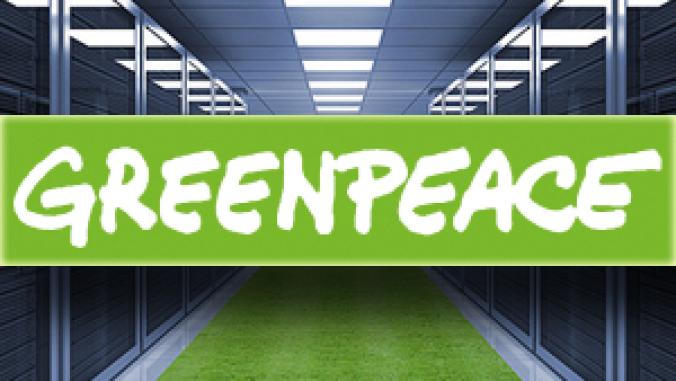IT Leaders Interested in Green But Lag in Adoption
Although IT leaders are starting to take an interest in green computing, there's a serious gap in adoption, according to a Canadian research firm.
Although IT leaders are starting to take an interest in green computing, there's a serious gap in adoption, according to Canadian research firm.
U.S. and Canadian governments, researchers found, are well behind the curve compared to the concern of the private sector.
InfoTech Research released its 2007 Green Index earlier this month, an examination of how IT decision makers in the U.S. and Canada view and implement green best practices in light of increased press and environmental interest.
Researchers found that a quarter of all respondents described themselves as either very concerned or extremely concerned about green issues and the environment.
"These are likely individuals presiding over data centers where power and cooling capacity are becoming an issue or rising energy costs are getting the attention of senior management," the report said.
Twenty percent of respondents called their IT operations green, while 20 percent said their operations were wasteful. Another 9 percent described their IT departments as either very wasteful or extremely wasteful.
"Given the high cost of energy, it is surprising to see that so many enterprises in the very/extremely wasteful categories," Info-Tech researchers wrote.
One-fifth of those that classified their IT operations as wasteful said they had no concerns for energy efficiency or the environment.
"This is shocking given that, on average, energy costs comprise 20 percent of data center spending," researchers said. "These enterprises are likely throwing away significant amounts of money."
As way of explanation behind the finding, researchers said some IT managers just aren't motivated to go green while other may have "inefficient legacy systems" in place.
Researchers found a large gap between interest in green concerns and execution of green best practices. For instance, a quarter of respondents said they were very or extremely concerned but less than 10 percent actually implemented green best practices.
Researchers noted that government agencies fell well behind the private sector in green IT departments. Of nine sectors studied, government concern for green practices ranked last at 10 percent compared to 49 percent of primary industry enterprises.
"Transportation/utilities/communications is an energy-intensive segment and, not surprisingly, ranks high on the list," the index said.
The report found more concern and adoption of green issues and technologies in mid-sized enterprises with 250 to 1,000 employees, with concern rising sharply at the 250-worker mark.
This segment lead the adoption of several green strategies, such as budget allocation for green IT projects, data center energy optimization, rightsizing IT equipment and considering green alternatives for sourcing.
Researchers attribute this trend to the fact that mid-sized enterprises are large enough to feel the pinch of high energy costs and are small enough to avoid the bureaucracy that could derail green IT adoption plans. These companies have large enough budgets to invest in green strategies, researchers said, noting that 26 percent of companies with 250 to 500 workers possessed green IT budget allocations, compared to 13 percent across other segments.
Organizations that described themselves as leading edge, focused on innovation or on controlling costs more likely have green concerns or green IT practices in place.
The index predicts that interest in green IT strategies will continue growing and will pick up traction in areas that reduce waste and cost. Researchers also foresee more spending on data center design, virtualization and consolidation, print optimization and system management tools.
Eventually, researchers said, green consideration will trickle into sourcing and procurement decisions, which could have a ripple effect from wholesalers and retailers to manufacturers.
U.S. and Canadian governments, researchers found, are well behind the curve compared to the concern of the private sector.
InfoTech Research released its 2007 Green Index earlier this month, an examination of how IT decision makers in the U.S. and Canada view and implement green best practices in light of increased press and environmental interest.
Researchers found that a quarter of all respondents described themselves as either very concerned or extremely concerned about green issues and the environment.
"These are likely individuals presiding over data centers where power and cooling capacity are becoming an issue or rising energy costs are getting the attention of senior management," the report said.
Twenty percent of respondents called their IT operations green, while 20 percent said their operations were wasteful. Another 9 percent described their IT departments as either very wasteful or extremely wasteful.
"Given the high cost of energy, it is surprising to see that so many enterprises in the very/extremely wasteful categories," Info-Tech researchers wrote.
One-fifth of those that classified their IT operations as wasteful said they had no concerns for energy efficiency or the environment.
"This is shocking given that, on average, energy costs comprise 20 percent of data center spending," researchers said. "These enterprises are likely throwing away significant amounts of money."
As way of explanation behind the finding, researchers said some IT managers just aren't motivated to go green while other may have "inefficient legacy systems" in place.
Researchers found a large gap between interest in green concerns and execution of green best practices. For instance, a quarter of respondents said they were very or extremely concerned but less than 10 percent actually implemented green best practices.
Researchers noted that government agencies fell well behind the private sector in green IT departments. Of nine sectors studied, government concern for green practices ranked last at 10 percent compared to 49 percent of primary industry enterprises.
"Transportation/utilities/communications is an energy-intensive segment and, not surprisingly, ranks high on the list," the index said.
The report found more concern and adoption of green issues and technologies in mid-sized enterprises with 250 to 1,000 employees, with concern rising sharply at the 250-worker mark.
This segment lead the adoption of several green strategies, such as budget allocation for green IT projects, data center energy optimization, rightsizing IT equipment and considering green alternatives for sourcing.
Researchers attribute this trend to the fact that mid-sized enterprises are large enough to feel the pinch of high energy costs and are small enough to avoid the bureaucracy that could derail green IT adoption plans. These companies have large enough budgets to invest in green strategies, researchers said, noting that 26 percent of companies with 250 to 500 workers possessed green IT budget allocations, compared to 13 percent across other segments.
Organizations that described themselves as leading edge, focused on innovation or on controlling costs more likely have green concerns or green IT practices in place.
The index predicts that interest in green IT strategies will continue growing and will pick up traction in areas that reduce waste and cost. Researchers also foresee more spending on data center design, virtualization and consolidation, print optimization and system management tools.
Eventually, researchers said, green consideration will trickle into sourcing and procurement decisions, which could have a ripple effect from wholesalers and retailers to manufacturers.




